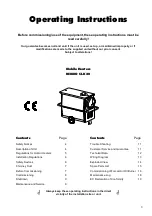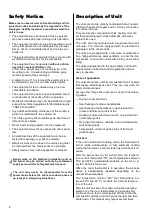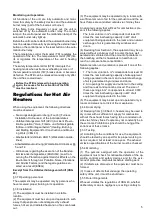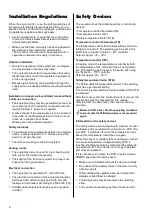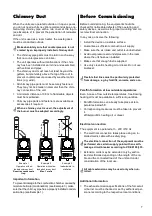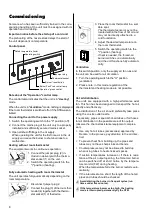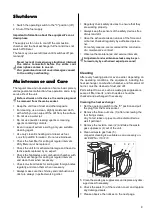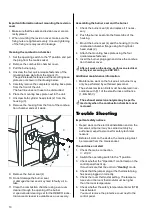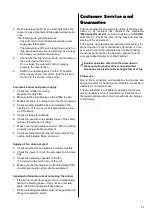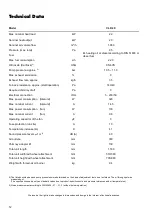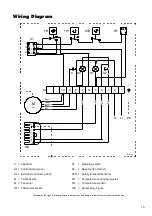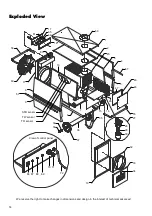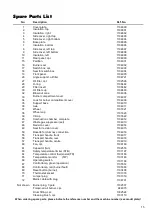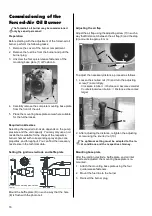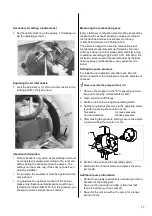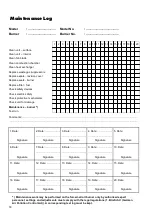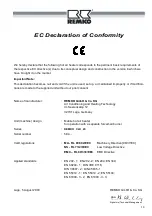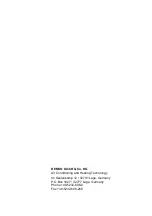
5
(3) The equipment may be operated only in rooms with
a sufficient amount of air for the combustion and the ex-
haust fumes are conducted outside via chimney flues.
A natural air supply that suffices for combustion is pre-
sent if the following applies:
The room volume in m³ corresponds to at least 10
times the nominal heating capacity in kW of all
equipment being operated in the room and a natural
exchange of air is guaranteed by windows and
doors.
(4) Deviating from Section 3, the equipment may be op-
erated without a chimney duct in rooms that are well
aerated and ventilated and the amount of pollutants in
the breathing air that is hazardous to health do not
reach an unreasonable concentration.
Natural aeration and ventilation is present if one of the
following applies:
1. The room volume in m³ corresponds to at least 30
times the nominal heating capacity of all equipment
being operated in the room and a natural exchange
of air is guaranteed by windows and doors.
2. Air openings for supply and outlet air in the ceiling
and floor exist and cannot be closed. The size of
these openings in m
2
corresponds to at least 0.003
times the nominal heating capacity in kW of all
equipment being operated in the room.
(5) The equipment may be set up and operated only in
rooms and areas not at risk of fire or explosion.
§ 44 Room drying
(2) Deviating from § 38 Sect. 3, heaters may be used to
dry rooms with a sufficient air supply for combustion
without the exhaust fumes having to be conducted out-
side via chimney flues. People may not constantly be in
these rooms. Prohibition signs should be hung at the
entrances of these rooms.
§ 53 Testing
(2) According to the conditions for use, the equipment
should be tested by an expert for its proper working or-
der as required, but at least once a year. The exhaust
emission specifications of the burner must be checked.
§ 54 Monitoring
(1) The persons assigned with the operation of the
equipment must check for noticeable defects of the op-
erating controls and safety devices and for the exis-
tence of protective mechanisms before starting work.
(2) If defects are discovered, the supervisor must be in-
formed.
(3) In case of defects that endanger the operating
safety of the unit, it must be shut down.
§ 55 Rule infringements
Whoever violates the regulations of VBG 43, whether
deliberately or due to negligence, is acting contrary to
Monitoring unit operation
All functions of the unit are fully automatic and moni-
tored for safety by the safety devices and the automatic
burner relay (part of the forced-air oil burner).
If the flame burns irregularly or goes out, the unit is
switched off by the automatic burner relay. The control
lamp on the control panel and the malfunction lamp of the
automatic burner relay light up.
Before the unit can be restarted, the automatic burner relay
must be released manually by pressing the external reset
button on the control panel or the reset button on the auto-
matic burner relay.
The temperature control thermostat (TR) regulates the
operation of the fan. The temperature monitor (TW) lim-
its or regulates the temperature of the unit in heating
mode.
The safety temperature limiter (STB) interrupts the
heating mode when extreme overheating occurs or if
the temperature monitor (TW) breaks down or becomes
defective. The STB can be released manually only after
the unit has cooled down.
Before the STB is released to begin operation
again, the causes for the activation of the STB
must be localised.
Regulations for Hot Air
Heaters
When using the equipment, the following directives
must be observed:
– Feuerungsanlagenverordnung (FeuVo) (Furnace
Installation Ordinances) of the individual states
– Unfallverhütungsvorschrift (UVV) (Accident Preven-
tion Regulation) "Heiz-, Flämm- und Schmelzgeräte
für Bau- und Montagearbeiten" (Heating, Burning,
and Melting Equipment for Construction and Mount-
ing Work) (VBG 43)
– Arbeitsstättenrichtlinien ASR 5 (Workstation Guide-
lines)
– Arbeitsstättenverordnung (Workstation Ordinance) §§
5 and 14
– Ordinances regarding the execution of the Bundes-
Immissionsschutzgesetzes (BImSchG) (Law Con-
cerning the Protection against Harmful Effects on the
Environment through Air Pollution, Noise, Vibrations,
and Similar Factors) and the legal regulations en-
acted as a result (ENEG)
Excerpt from the Unfallverhütungsvorschrift (VBG
43)
§ 37 Operating personnel
The equipment may be operated only by persons who
have received proper training in its operation.
§ 38 Installation
(1) The equipment must be installed in a stable
location.
(2) The equipment must be set up and operated in such
a way that people are not endangered by exhaust
fumes, hot air, and radiated heat and no fires can break
out.
Summary of Contents for CLK 20
Page 2: ......



